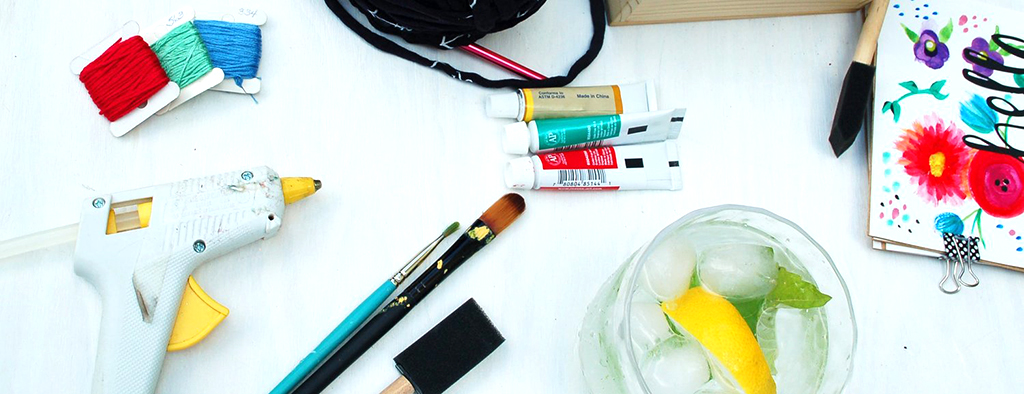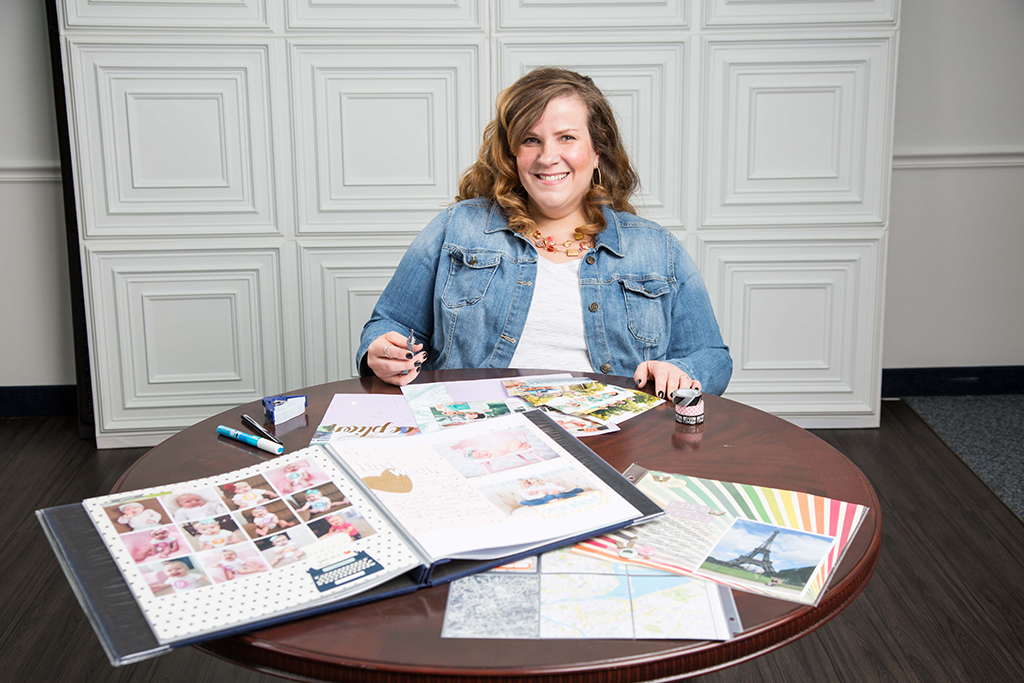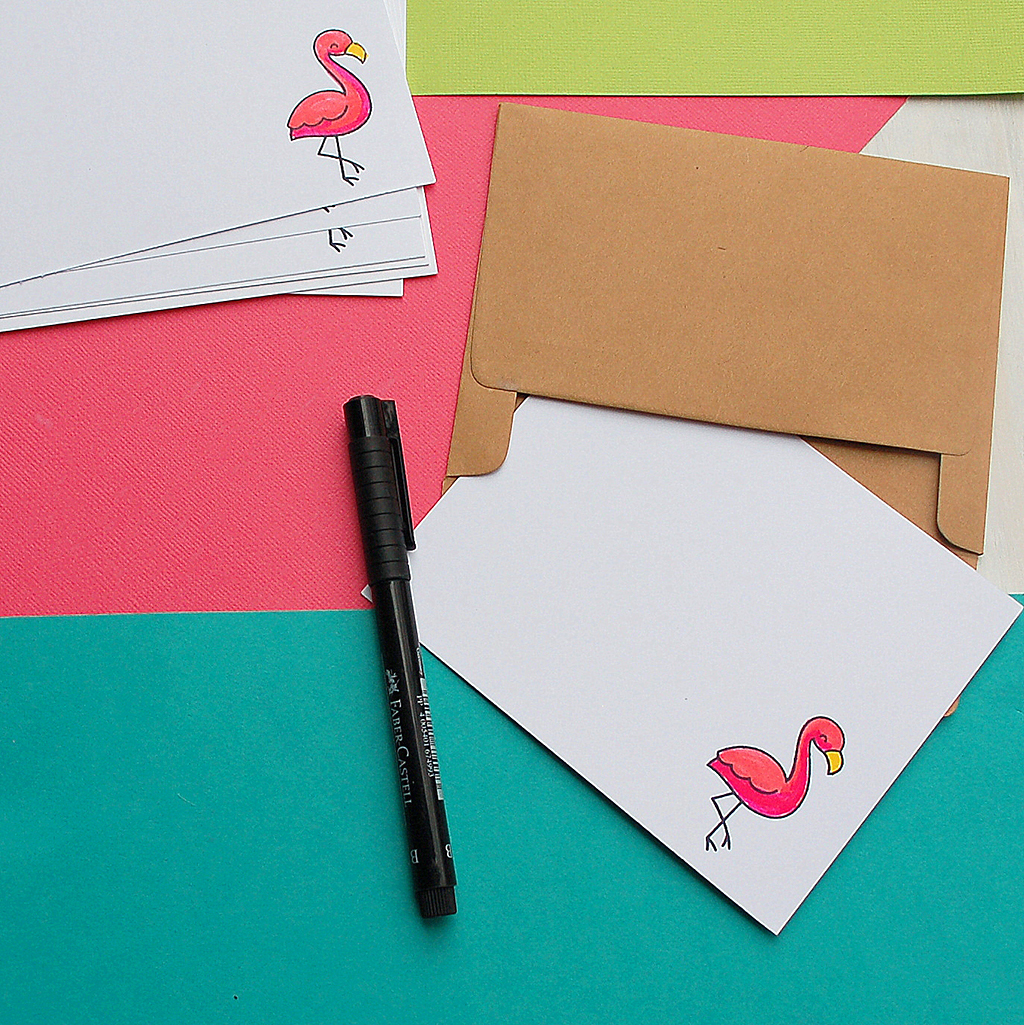
Michelle Bazeley of Hot Wheels and Glue Guns is an avid blogger and sought after scrapbooking teacher.
Photos courtesy of Michelle Bazeley
Like many creatives, her hobby turned into a side hustle. Ten year ago she started a blog, Hot Wheels and Glue Guns, to document her creative output as well as chronicle her life as an advocate for the disabled. Over the past two years Hot Wheels and Glue Guns has become a business and Bazeley has begun hosting classes teaching others her love of scrapbooking. In her online store she now sells greeting cards, scrapbooks, and journals as well as floral reefs and portraits made from paper. She’s also begun attending workshops, craft fairs, and craft business conferences to get more exposure for her work. For Bazeley and other makers with physical disabilities, applying to a craft show or attending an event takes a great deal more energy than just checking for conflicts with a personal calendar of events, though.
The Americans with Disabilities Act (ADA) applies to temporary events including conferences, trade shows, and craft fairs. Signed into law on July 26,1990, the ADA was the nation’s first civil rights law protecting and ensuring that individuals with disabilities were given proper accommodations in American society. Seventy percent of all Americans will experience a temporary or permanent disability at some point in their lvives and the ADA ensures that they can have access to their communities and can attend events with their friends and families.

Still, outdoor locations can prove difficult to navigate. Rebekah Taussig is a writer and teacher who runs a popular Instagram account, @sitting_pretty, about her life in what she describes as a crippled body. She attends an annual craft fair in Kansas where she lives, but finds the locale to be challenging. “It always takes place in a park, which means a grassy, hilly terrain and a lot of crowds — in some ways, I can see that this is part of the charm of the experience, but it also makes things difficult to navigate. I still go to this fair most years, but it totally exhausts me. And because my experience isn’t considered in the planning, it’s difficult to shake the feeling that the organizers don’t really want me there,” she says.
Planning for maneuverability inside is important, too. Ample room between booths and tables is important as well. Banquet rounds packed together tightly or narrow classroom-style seating are difficult for someone in a wheelchair to navigate. “I also ask about the height of the tables for classes,” Blazeley says. “Some classes have bar height tables and those just don’t work for me.” Bathrooms can also be tricky. She asks if there at least one handicapped accessible bathroom on site.

“I’ve done some public speaking for my day job and been asked to just be in front of the stage, on the floor,” Blazeley says. “That doesn’t work. You don’t have the same authority as the other speakers because you’re at the same level as the audience.” The stage should have a ramp and lecturns at various heights.
Getting to an event can be a hurdle for disabled artists who are reliant on outside transportation. Sharon Dorsey is the program manager at Open Door Studios, a studio and gallery space for artists with disabilities in Columbus, Ohio. The studio represents more than 100 artists, with space for up to 35 on any given day. “Many of the artists at Open Door utilize the facility as a space to express themselves. They may lack the resources to attend creative programming and services that take into account a wide level of disabilities so they can become self-sustaining artists,” says Dorsey. For example, often craft shows occur on the weekend which can be difficult for someone with a disability because transportation is often provided and offset by insurance and typically offered only Monday through Friday. This makes disabled artists dependent on friends or family for travel accommodations to weekend events. Parking is also an important considering. Taussig points out, “Are there a sufficient number of accessible parking spaces? Or are people expected to find street parking and trek up a giant hill to the event?”
Making accessibility a part of our craft world builds a more diverse community and adds new perspectives that benefit everyone. As Blazeley points out, intention goes a long way towards making everyone feel welcome and comfortable. “People get really hung up about complying with the law and all the specifics. This doesn’t have to be intimidating and you don’t need to know everything,” she says. “Don’t be afraid to ask if you don’t know.”
When planning an event organizers can take steps to ensure that the venue is welcoming to all
- During the registration process give people a discreet way to share special requirements with you. “What do you need to fully participate?” is a good way to phrase this question. Follow up if needed and use this feedback to help prepare. For example, someone may ask for large print materials. This is a relatively easy accomodation to make, but if you didn’t ask you may not have known to make it.
- Make signage bold and hang it at a variety of heights and so that it’s available for reading close.
- Be sure all presenters wear microphones.
- Create access that is dignified, meaning wide aisles, tables, ramps to the stage, and podiums, and a check-in desk that is accessible to everyone. Check that there’s a working elevator.
- Train the staff on the accessibility options that are available so that they’re prepared to help everyone feel welcome. Ask yourself, “How would I want to be treated?”


Megan Green
contributor
Megan is a hard core maker who continues to bring a highly curated selection of handmade goods to her hometown of Columbus, Ohio and through her organization of Craftin' Outlaws. Megan is also the owner of Stinkybomb Soap, co-organizer of Midwest Craft Con, mother of two, wife to one and lover of all things craft related.


much needed information! I wish you’d make this public, so more people and craft event organizers can read it. thanks!
We decided to follow your suggestion. This piece is now public 🙂
Jane, thank you for suggesting that! I am so glad you enjoyed it and want to share it.
Michelle Bazeley
Yeah, that’s why I have never (and likely will never) participate in a craft show — I have a neck injury that turned arthritic, I simply cannot spend even an hour (let alone a whole day or weekend) looking up at people, turning my head to talk to people and answer questions, etc. I also can’t be upright for that long, I need to have my head supported. Even participating in the odd art exhibition locally hurts so much I end up miserable and in so much pain. For me too, it’s often awkward asking for accommodations (special seating, etc) as “I don’t look disabled” and I have a service dog with me. I’m grateful there are so many ways to be digitally visible these days in business, as otherwise I’d never be able to do what I do.
That’s an interesting perspective. As someone with a very visible disability I often get people approaching me to help, which can be a different kind of awkward, lol.
I really feel like a lot of ‘accommodations’ are really just simple adjustments and compromises (not big and expensive), and I sincerely hope the more we all talk about it, the more accepting people will be!